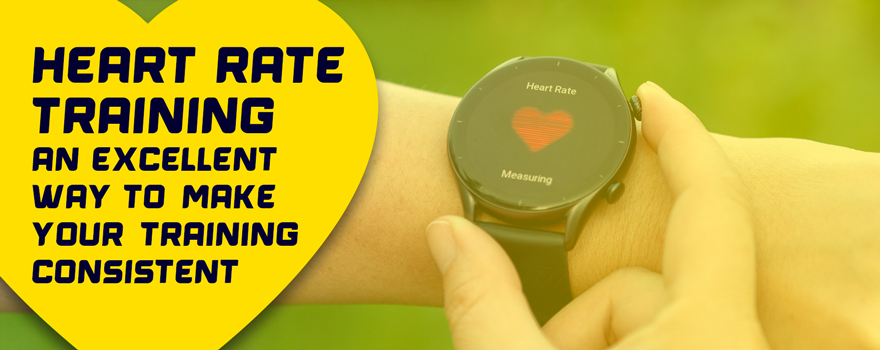
Distance and time are often the focus of runners. It’s often the phrase “I will run a half-hour today or jog a five-kilometer distance” that determines your pace and intensity. It’s also the best way to prepare for an important race, such as a Marathon. This ensures that you have covered enough distance before the race.
The heart rate training method is increasingly popular among runners because it provides valuable data about the body and our capabilities. What is heart rate training, and should you be using it?
What is HR Training?
Listen to your heart is a classic phrase we’ve heard. We probably associate it with rom-coms, and not our heart rate. Right?
Move over Meg Ryan (Showing my age there). Multisporters are redefining the phrase. Fitness tracking is becoming more popular. This allows runners to measure their heart rates in BPM and then use that information to determine their intensity. You can tailor your run to your body and heart rate zone.
What are HR zones?
Let’s talk about heart rate zones. They range from the resting heart rates (when you’re at rest) to our maximum heart rates (MHR), which is our upper limit for what our cardiorespiratory systems can manage when we exercise. Between these marks are several zones. Here’s how they break down:
Zone 1: Extremely light , between 50% and 60% MHR
Zone 2:Light 60% to 70% MHR
Zone 3, Moderate intensity, 70 to 80 % of MHR
Zone 4, Hard, 80 to 90 percent of MHR
Zone 5 – Extremely hard (90 to 100 percent of MHR)
To work out zones of heart rate at their most basic level, you must know your MHR. You can calculate this using a simple formula:
Subtract 220 from your age. As an example, if you are 50 years old, your estimated maximum heart rate is 220 minus 50 = 170 beats per minute.
There are other methods such as field tests or laboratory testing, but they are only suitable for athletes with experience.
You can calculate your zones once you have calculated your MHR. Multiply your MHR with the percents of each zone to get this.
Why Is HR Training So Good Then?
Now that you know the basic principles of heart rate training why do people use it? Your running heart rate gives you an improved workout is the short answer and heres a few reason why.
Last Longer
Running can be more efficient with heart rate data. We can benefit from knowing more about our body. We may think that we’re working hard when in fact we aren’t. When used correctly, heart rate zones are a great way to improve performance.
Faster Recovery Times
Heart rate training helps runners know exactly how much they are training. They can then push harder if needed, or stop altogether if overdoing things. We can prevent injury and improve recovery when we know our bodies better. Your body will never be overworked with heart rate training. This means it won’t have to suffer the following day.
Keep Your Workouts Personal
It’s great that heart rate training can be completely tailored to your needs. Running can be a challenge for everyone, particularly when you follow generic training programs. It’s possible that what works for a runner may not be the best for someone else. Heart rate training allows you to listen to and react only to your own body.
Should I Really Be Heart Rate Training?
Heart rate training is a popular method that has many benefits. Does that mean you should to do it?
Depending on what you mean. When it comes to multisport, there are no wrong or right answers. Heart rate training is a favorite of some runners because it allows them to get the details about how their bodies perform. Some people prefer to go by their gut feelings and be more spontaneous. You might consider heart rate training, though, if you fit into any of these categories:
You Have A Big Event Coming Up
You Are Trying To Lose Weight?
Heart rate training can be helpful if you are training for races such as half-marathons, marathons, or ultramarathons, Iron Mans, Duathlons or other Multisport events. You can use the different zones to improve your performance. For example, runners looking to increase their speed should practice interval running in zone 5 so that they can go harder during race day. The majority of the running they do should be in Zone 2 to avoid burning out.
Heart rate training could be beneficial for people who run to lose weight. Running becomes part of your daily routine and your body adapts quickly. You may find it difficult to lose weight, particularly if you have an increase in appetite. Running at a higher heart rate, on the other hand, increases your metabolism (especially Zones 4 and 5), and causes your body to start burning more fat.
Injury Recovery
It’s easy to push yourself too far too soon when you are recovering from a serious injury. This can be prevented by heart rate training, which allows you to see how you are performing as well as when you may have pushed your body too far. It will also help you to recover faster and return safely to running.
Just Bored With Your Traditional Training Methods
You can become bored with your routine after running for some time. It’s worth trying heart rate training to spice up your routine and mix it up.
Whatever your reason Heart Rate Training is an excellent method and may help you be more consistent with your training and help you keep it up.Get yourself booked on to one of our Events and see if that training has paid off. Or for more training tips check out one of our other posts like “How To Train For My First Multipsort Event” or “Going The Distance“

